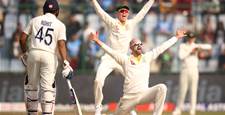If you reckon lawn bowlers don't need to be fit to be at the top of their game, think again.
 Photo by Warren Clarke
Photo by Warren ClarkeLike any sport, lawn bowls will catch you out if you’re not at your physical peak (no, we haven’t just returned to work after a few lunchtime sherries at our local bowlo). The importance of fitness to lawn bowlers has even been discovered by one of the best in the business, Aron Sherriff. The 28-year-old, who bowls for Ettalong on the New South Wales central coast, has dropped 30kg over the past two years and is looking and feeling great for Glasgow 2014, his second Commonwealth Games tilt after he wore the green and gold at Delhi (he dislocated a shoulder in a team bonding session while white water rafting six weeks before those Games, but still competed). Sherriff debuted for Australia in 2007, winning the World Team Cup at Tweed Heads. In 2010 he claimed a World Championship in singles and two years later helped take out the World Fours and placed second at the World Pairs. He’s been named world bowler of the year by his peers for the last three years ... so why did he have to lose all that weight – he was travelling fine, wasn’t he? Yep, he was, but Sherriff has been around long enough to know that if you’re not at the top of your game physically and mentally, the competition will catch you and pass you at the back end of tournaments. We’re not talking senior citizens who are easy to blow away here: the average age of Australia’s men’s bowls squad at Glasgow is just 34, while for the women it’s 27. Sherriff will be bowling in the all-important singles role for the Aussies, in a sport where ten golds will be up for grabs. We’re glad he’s fit and firing: here’s how he’s remodelled himself into a lawn bowls machine.
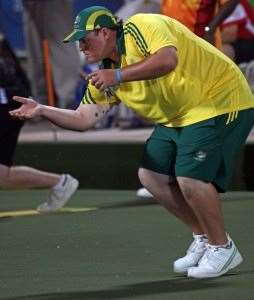 Photo by Getty Images
Photo by Getty ImagesIN THE BEGINNING
“When I was ten years old, my dad Tony was a social bowler. I’d roll my bike down and watch him play after school. A coach at the club at the time asked me if I was interested in trying bowls out. I was into as much sport as possible when I was a young bloke, so I thought I’d give bowls a go. Back then I didn’t even have an opinion of the sport; I didn’t know too much about it. It was an opportunity for me to play a sport with my father; that was the good thing about it. Once I found myself being picked in rep teams, my dad gradually gave the game away and became my biggest supporter; drove me around and watched me play. I suppose his bowling career suffered because of mine ... I grew up near Budgewoi, on the NSW central coast. Halekulani was my first club; that’s where I started. My coach was George Dawes. He was a state player for NSW and ACT at the time. He was a great guy to be learning from.”
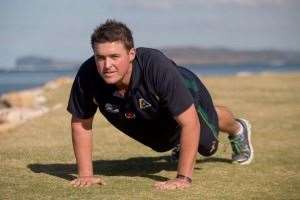 Photo by Warren Clarke
Photo by Warren ClarkeENDURANCE SPORT
“When I debuted for Australia back in 2007, there was already a high-performance program in place. It took me a little while to embrace it, but I now know that it is relevant to being at the top of your game for as long as you have to be for these major events. At the Commonwealth Games we’re competing for nine days. People think lawn bowls is easy, but we put in a lot of time to get to the level we’re at. The World Championships, in summer, in Adelaide, was about a 15-16-day event. To be competing at an international level for 15 days, your fitness has to be spot-on. I suppose the beauty of our sport is that you can play it on so many different levels; you can go out and play casually or try to be the best you can be and represent internationally. There are so many demographics which bowls appeals to on so many scales. It’s why I love it.”
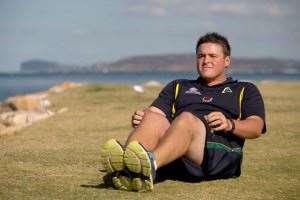 Photo by Warren Clarke
Photo by Warren ClarkeWEIGHTY ISSUES
“I had always believed in my bowling ability, but up until 2011 I was ‘getting away’ with being overweight. After the last major event before the 2012 Worlds, the Aussie coach Steve Glasson sat me down for a debrief. He identified that my best performances were at the start of tournaments. Towards the end of these 11-12-day events, my form was still pretty good, but it had certainly dropped off. Steve identified that my level of fitness wasn’t good enough. From that point, I decided I was going to do something about it. Bowling ability-wise I was happy, but fitness-wise I wasn’t. As far as the longevity of my career was concerned, my weight was something that was holding me back. Being physically drained was draining me mentally as well. I wasn’t 100-percent switched on while I was competing towards the end of events, when you really need to be at your best.”
“I got myself on a reasonably strict diet. In the old days I would never eat breakfast, then have a big lunch, be full, and have a big dinner. I needed to cut my meals down into five-six portions per day, smaller amounts to get my metabolism going. I just cut out all the deep-fried stuff. Dropped the sugar. It was all Wheaties and skim milk for breakfast, lots of fruit, lots of salads, vegetables, steamed fish, grilled chicken, lean beef. I’d never eaten terribly, but when I’d be away on bowls trips, I’d take the ol’ counter meal instead of trying to find something better.”
 Photo by Warren Clarke
Photo by Warren ClarkeON THE RUN
“Firstly, I started off just walking; my fitness wasn’t the best. I set myself a goal that I’d like to be able to run for half an hour without stopping. That was just over two years ago. I worked on it. I’d go for a run and when I was tired, walk, and then continue to run. Now, I’m at the point where I can go for a 45-minute run and not stop. So I have my fitness up to where it needs to be. I didn’t see the purpose of running initially, but now that I’m involved in it and actually doing it, it’s taken my game to that next level. I run five-six days a week when I’m home. If I’m away competing, I like to get up early in the morning and go for a walk before breakfast. Probably not a run – it’s not the best thing to do when you have a day of bowls ahead of you.”
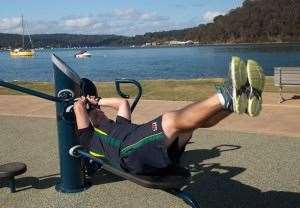 Photo by Warren Clarke
Photo by Warren ClarkeGETTING PHYSICAL
“My weights routine is something I can do at home. Probably because I was a big guy, gyms intimated me; I tried it, but didn’t feel comfortable. I’ve lost 32kg in just over two years. It’s a work in progress. I’d still like to drop another 8-10kg. I weigh 105kg at the moment – my long-term goal is to get down to 95kg. Fitness-wise you’re always trying to stabilise your delivery; I use squats and lunges. I’ll do three sets of ten lunges each leg and then, say, three lots of 20 squats. I’m not a big sit-up fan, but working on your core is important. I mix in probably two or three core sessions a week as part of my overall fitness regime. I do a bit of abdominal work and things like that, too. Push-ups? I’m probably doing about three lots of 15 and then if I can do more, I do more. I’ll also do a bit of upper-body stuff. Nothing heavy, just some dumb bells and light weights to tone and maintain; more for endurance rather than explosive strength. I’ll do some chest flys and some shoulder work as well. I try to rotate the exercises a bit. It works for me. Ours is an endurance sport. We’re out in the sun for up to eight, nine, ten hours a day. It’s important to maintain that endurance fitness, so that when it comes to the end of the day and you have to make that big bowl, physically and mentally, you are there.”
 Photo by Warren Clarke
Photo by Warren ClarkeJACK HIGH
“Naturally, leading into events, I like to get onto the green as much as possible and work on position and discipline-specific stuff. For example, at the Commonwealth Games, I’ll have the singles role, which is rare for me. Part of that role is throwing the jack; the lead rolls the jack to start the game. My main focus leading into Glasgow has been my jack and first-bowl skills, so I get out two or three times a week for a couple of hours and work on that. It’s all about repetition. I’ll probably roll 100 times in a practice session, just to get on top of it. I work full-time here at Ettalong Bowling Club, organising competition days, etc, so I have plenty of access to the greens. I’ve noticed in events that I’ve played in that my jack and first-bowl skills have improved out of sight since I’ve started playing singles for Australia. Then there are grouping drills. Part of playing singles is about being able to put lots of bowls in good areas. In the grouping drill, I start off by putting one bowl down, then try and consistently group my bowls in that area. The more you try and complicate things, the more difficult they become and are harder to replicate. With bowls, it’s all about repetition and being consistent. I just try to keep it as simple as possible. The less you do in your delivery, the less you have to bugger up. It’s all about line and length. You use your practice ends to properly work out your right line and the speed of the green so you can get the right pace.”
 Photo by Warren Clarke
Photo by Warren ClarkeLINE AND LENGTH
“For me, a bowling action is all about consistent, forward movement, making sure your body is lined up with where you want your bowl to go, keeping your arm nice and relaxed and swinging through your line. If I line myself up right, then all I have to worry about is my weight on the bowl. A lot of people can either take too short a step or too big a step. You only need a normal walking step, a nice pendulum swing through the arm; just keeping it simple. It’s not something you can pick up straight away. I’ve been playing for 18 years and I’m still learning things about bowls. My technique changes for different surfaces and conditions as well. That’s the beauty of our sport – you never master it, you’re always learning new things.”
Related Articles

Training with the Cronulla Sharks' Michael Ennis

Training with the Cronulla Sharks' Michael Ennis






